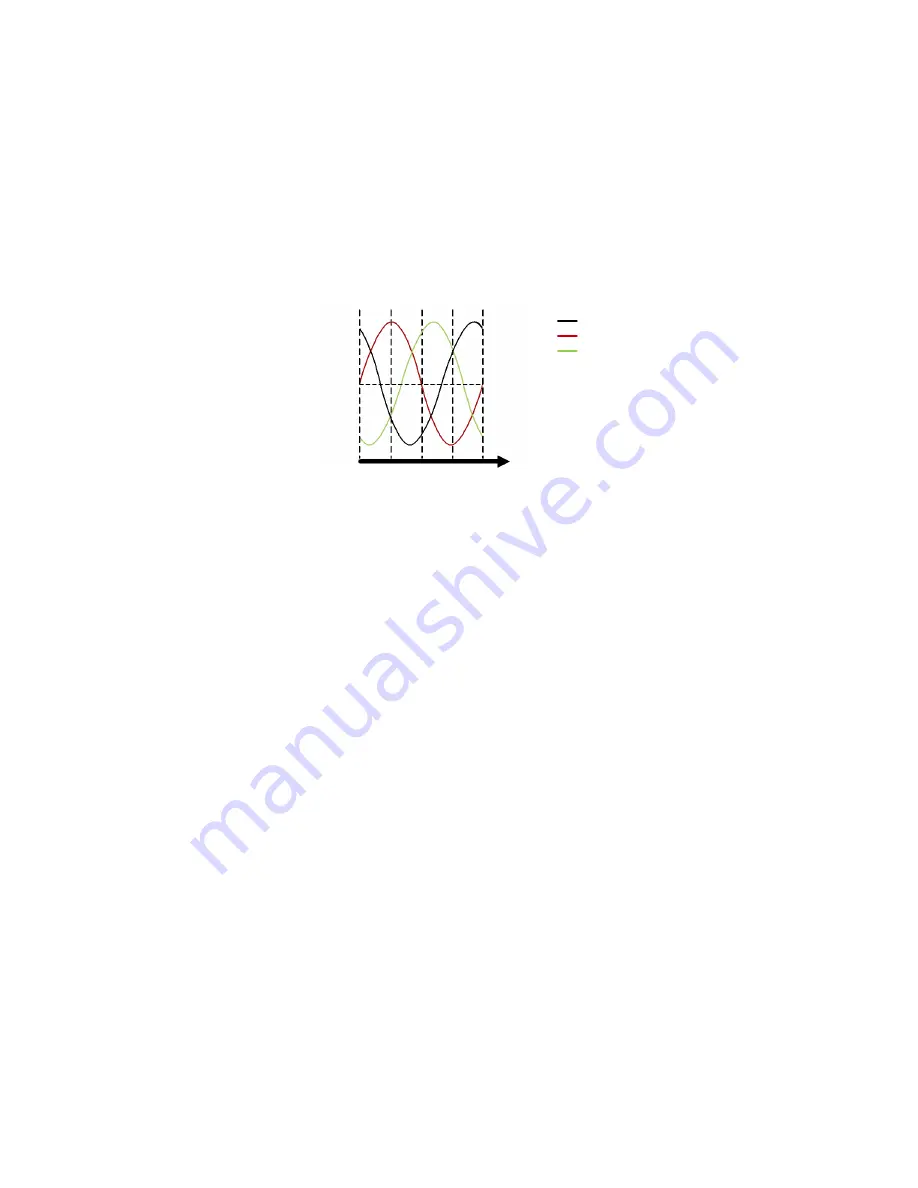
SMAC
LAC-26 Technical Reference Manual
4/29/2013 75
DZ drives allow either sinusoidal or trapezoidal commutation.
Sinusoidal Commutation Sinusoidal commutation provides greater performance and efficiency than
trapezoidal commutation. DZ drives can commutate sinusoidally when connected to a motor- mounted
encoder. Sinusoidal Commutation works by supplying current to each of the three motor phases smoothly in
a sinusoidal pattern. The flow of current through each phase is shifted by 120 degrees. The sum of the
current flowing through all three phases adds up to zero. Figure 4.2 shows one electrical cycle of the motor
phase currents.
FIGURE 4.2 Sinusoidal Commutation Motor Phase Currents
Trapezoidal Commutation
Trapezoidal commutation is
accomplished with the use of Hall Sensors on three phase (brushless) motors. DZ drives can commutate
trapezoidally when used with properly spaced Hall Sensors. Unlike sinusoidal commutation, current flows
through only two motor phases at a time with trapezoidal commutation. The Hall Sensors each generate a
square wave with a certain phase difference (either 120- or 60 - degrees) over one electrical cycle of the
motor. This results in six distinct Hall states for each electrical cycle. Depending on the motor pole count,
there may be more than one electrical cycle per motor revolution. The number of electrical cycles in one
motor revolution is equal to the number of motor poles divided by 2. For example:
•
a 6-pole motor contains 3 electrical cycles per motor revolution
•
a 4-pole motor contains 2 electrical cycles per motor revolution
•
a 2-pole motor contains 1 electrical cycle per motor revolution
The drive powers two of the three motor phases with DC current during each specific Hall
Sensor state as shown in Figure 4.3.
0
Commutation
0
V
ol
t
s
Phase A
Phase B
Phase C
360
270
180
90
Electrical Degrees











































